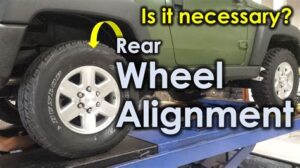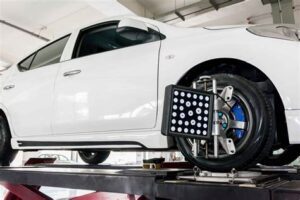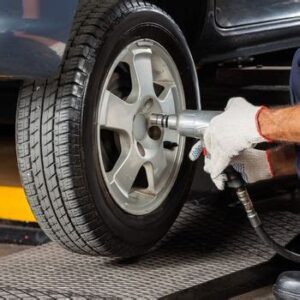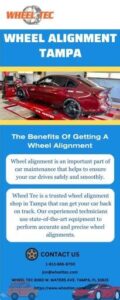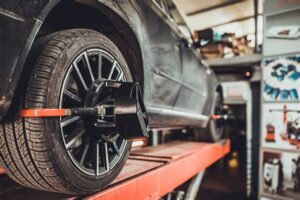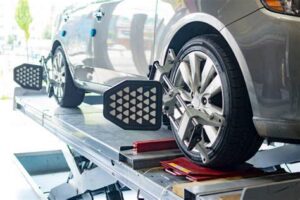When it comes to maintaining your vehicle, few aspects are as crucial as proper wheel alignment. Misalignment can lead to a host of problems, from uneven tire wear to compromised vehicle handling, posing safety risks for you and your passengers. But how can you tell if your car needs an alignment? In this article, we will guide you through the signs that indicate misalignment, explain the importance of keeping your wheels properly aligned, and provide tips for checking your car’s alignment at home. With a solid understanding of when to seek professional help, you can ensure that your vehicle remains safe and performs at its best on the road. Let’s dive into the essential details that will keep your ride smooth and efficient!
Signs Your Car Indicates It Needs An Alignment
Recognizing the signs that your car may need an alignment is crucial for maintaining not only your vehicle’s efficiency but also your safety on the road. Here are some telltale indicators that suggest a possible alignment issue:
- Uneven Tire Wear: If you notice that the tread on certain tires is wearing down faster than others, this can be a clear sign of misalignment.
- Pulling to One Side: When driving on a straight and level road, if your vehicle constantly pulls to the left or right, it could indicate an alignment problem.
- Steering Wheel Off-Center: If your steering wheel is not centered when driving straight, it may signal that your wheels are misaligned.
- Vibration in the Steering Wheel: Unusual vibrations in the steering wheel while driving can also indicate that your car is out of alignment.
- Squealing Tires: If you hear a squealing noise from your tires while driving, it may suggest that the alignment is off and the tires are scrubbing against the road.
Being aware of these symptoms can help you understand how to take action sooner rather than later, preventing further damage to your vehicle and ensuring a smoother ride.
Understanding The Importance Of Proper Wheel Alignment
Proper wheel alignment is crucial for a multitude of reasons, profoundly impacting your vehicle’s overall performance and safety. When your wheels are aligned correctly, they all point in the same direction and make proper contact with the road. This alignment leads to several benefits:
- Enhanced Tire Longevity: When your car is properly aligned, your tires wear evenly, resulting in significantly longer lifespan. Misalignment can cause uneven tire wear, leading to premature replacement.
- Improved Fuel Efficiency: An aligned vehicle reduces rolling resistance, meaning your engine doesn’t have to work as hard. This, in turn, enhances your car’s fuel efficiency and saves you money on gas.
- Better Handling and Safety: Proper alignment ensures that your car handles predictably. This means clearer steering response and stable cornering, which are critical for maintaining safety on the road.
- Reduced Strain on Suspension Components: Misalignment can place undue stress on suspension parts, leading to wear and tear that could necessitate costly repairs down the line.
- Enhanced Comfort: A car with correct alignment offers a smoother ride. Any vibrations or pulling sensations are minimized, ensuring a more enjoyable driving experience.
Understanding and maintaining proper wheel alignment is essential for vehicle safety, performance, and longevity. Knowing how to identify signs of misalignment can help you take timely action, preventing more significant issues down the road.
How To Check Your Car’s Alignment At Home
Checking your car’s alignment at home can be a simple process if you know what to look for. While a professional assessment is recommended for precise measurements, there are a few methods you can use to gauge whether your vehicle may be misaligned.
Here are some steps you can take:
- Visual Inspection: Park your car on a flat surface and visually inspect the tires. Look at the angle of the tires – they should be straight and parallel to each other. If you notice one or more tires pointing inward or outward, this could indicate a misalignment.
- Check Tire Wear: Examine the tread on all four tires. Uneven wear patterns, especially if one side is more worn than the other, can be a clear sign of alignment issues. For instance, if the inner edges of the tire are more worn compared to the outside, it typically suggests misalignment.
- The Steering Wheel Test: When driving straight, observe your steering wheel. It should be centered and your vehicle should track straight ahead. If the steering wheel is off-center while the car is driving straight, it may suggest an alignment problem.
- Measurement Method: You can use a measuring tape to take the measurements between the front and back of the front tires. Measure the distance at the front and back of the tires. If the distance at the front is not the same as at the back, your wheels could be misaligned.
- The Plumb Line Method: Use a plumb line (a weight on a string) to measure from the top of the tire to the ground. Compare this measurement with the other wheels; any significant difference could indicate alignment issues.
By following these methods, you can get a preliminary understanding of whether your car might need an alignment. However, for a definitive assessment, consider consulting with a professional.
The Impact Of Misalignment On Tire Wear and Performance
Misalignment can lead to several significant issues concerning both tire wear and overall driving performance. When the wheels are not aligned correctly, it causes uneven tire wear, which can shorten the lifespan of your tires. Instead of wearing evenly across the tread, misaligned tires may develop bald spots or excessive wear on one side. This not only requires more frequent tire replacements but also can result in higher costs over time.
In terms of performance, misalignment can negatively affect your vehicle’s handling. You may notice that your car pulls to one side, making it challenging to maintain a straight line while driving. This not only affects comfort but also creates safety issues, particularly at higher speeds or in adverse weather conditions. Furthermore, misaligned tires can hinder fuel efficiency; when wheels aren’t tracking straight, the engine has to work harder, leading to increased fuel consumption.
To ensure your tires wear evenly and to maintain optimal driving performance, it’s crucial to regularly check your vehicle’s alignment. Remember, knowing how to identify signs of misalignment early on can save you both time and money in the long run.
When To Seek Professional Help For Alignment Issues
Even if you attempt to check and assess your car’s alignment at home, there are certain scenarios when it’s crucial to seek professional help. Here are the key signs that indicate it may be time to consult an expert:
- Persistent Pulling: If your vehicle consistently drifts to one side, and this issue doesn’t improve after adjusting tire pressure or rotating your tires, it’s a clear sign that your alignment needs professional intervention.
- Uneven Tire Wear: Regularly inspecting your tires is essential. If you notice that the tread is wearing unevenly, it’s a strong indicator that you may have alignment issues that need to be addressed by a professional.
- Off-Center Steering Wheel: When you’re driving straight but have to keep your steering wheel turned to one side, this misalignment should prompt you to see a mechanic.
- Vibration Issues: If you experience unusual vibrations in the steering wheel while driving, it could indicate that your wheels are misaligned and require expert analysis.
- Old Suspension Components: If your vehicle has older or worn-out suspension parts, consider getting a professional inspection, as this could impact your wheel alignment.
Addressing alignment issues in a timely manner is vital for the safety and performance of your vehicle. Not only does it enhance driving comfort, but it also contributes to the longevity of your tires and improves fuel efficiency. When in doubt, don’t hesitate to contact a professional to ensure your vehicle is safe and well-aligned.
Frequently Asked Questions
What are the signs that my car might need an alignment?
Common signs include uneven tire wear, your steering wheel being off-center, the car pulling to one side, and a squealing noise while turning.
How often should I check my car’s alignment?
It’s recommended to check your car’s alignment every 6,000 miles or at least once a year, but you should also have it checked if you notice any changes in handling.
Can I perform an alignment check at home?
While you can check for visual signs of misalignment at home, a proper alignment check requires special equipment and should ideally be done at a professional garage.
What causes a car to become misaligned?
Misalignment can occur due to several factors including hitting a pothole, curb strikes, worn suspension components, or regular wear and tear over time.
What are the potential consequences of driving with misaligned wheels?
Driving with misaligned wheels can lead to uneven tire wear, decreased fuel efficiency, and compromised handling, potentially causing safety issues.
How can I prevent my car from needing alignment too often?
To prevent frequent misalignment, drive cautiously over rough roads, regularly inspect your suspension components, and ensure proper tire pressure.
How much does a car alignment cost?
The cost of a car alignment typically ranges from $50 to $100, depending on the vehicle and location, but this can vary by service provider.
